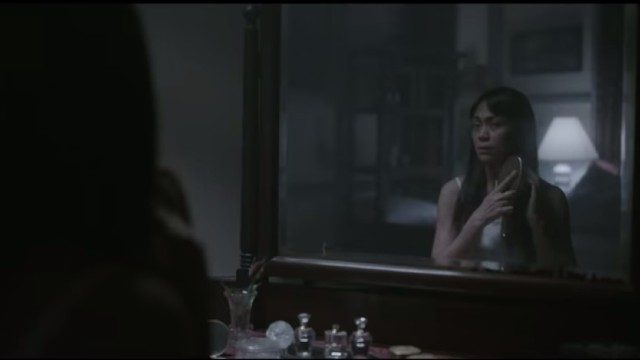SUMMARY
This is AI generated summarization, which may have errors. For context, always refer to the full article.

Even if the movie is essentially about demons terrorizing the titular innocent lass, Derrick Cabrido’s Clarita is too fearful to demonize anything other than demons.
Myriad of possibilities
It isn’t that Cabrido isn’t aware of the myriad of possibilities for the story of Clarita (Jodi Sta. Maria).
In fact, in introducing the milieu of post-War Manila, he presents various characters whose motives and interests relating to Clarita’s well-being are representative of several issues surrounding the exorcism that are far more complex than just the already obvious battle between good and evil.
Mayor Lacson (Nonie Buencamino) is more concerned about the beleaguered reputation of his beloved city than the young lady whose dangerous ailment remains a mystery. The doctor (Che Ramos) assigned to study Clarita’s case is in it to advance her career. The two priests (Ricky Davao and Arron Villaflor) charged of exorcising the evil out of Clarita are debating on issues regarding the truth behind demonic possessions.
Cabrido clearly knows how layered Clarita’s case is, how there is so much more to her story than the fact that she is being consumed by demons.
Clarita Villanueva’s infamous possession has been told and retold to the point that the exact details of her case has been obfuscated by so many versions and variations. It isn’t just an exorcism story. It is a window to a foregone era where fact and fiction collide, where affairs of the church and the state are intertwined, and where the borders of morality are skewed by issues much bigger than individuals. Cabrido’s most glaring fault with such a rich material is that he chose to take the route of least resistance. Clarita chose to be vanilla when it can be so much more.
A few ingenious scares
Thankfully, Clarita, despite being frustratingly safe, conjures more than a few ingenious scares.
Cabrido makes most of the period, blending his interpretation of the grotesqueries the occult can inflict on humanity with recreated imagery from the past. Clarita is most fascinating when it indulges in violence, when it reduces its characters to just vessels that get wounded or malformed or made more hideous for sheer spectacle. In a sense, the film does what it sets out to do, which is to disarm its audience even in the shallowest of ways.
While the performances are fine, they feel stilted by the lack of sufficient characterization.
Cabrido rushes to the horror, neglecting the precious humanity that he belatedly grounds his film on. The film is just unable to sufficiently fuse its intent to terrify and establish a connection with Clarita that is deeper than her diabolic inclinations. The film is too crowded with characters with various issues that it ultimately fails to focus on anything. It ends up a rather thin hodgepodge of half-baked discourse.
Novel value
Clarita ends up a lackluster exorcism film. It is just another one of the many dramatizations of true-to-life possession stories that fail to mine its compelling stories for novel value. – Rappler.com

Francis Joseph Cruz litigates for a living and writes about cinema for fun. The first Filipino movie he saw in the theaters was Carlo J. Caparas’ Tirad Pass.
Since then, he’s been on a mission to find better memories with Philippine cinema.
Add a comment
How does this make you feel?
There are no comments yet. Add your comment to start the conversation.